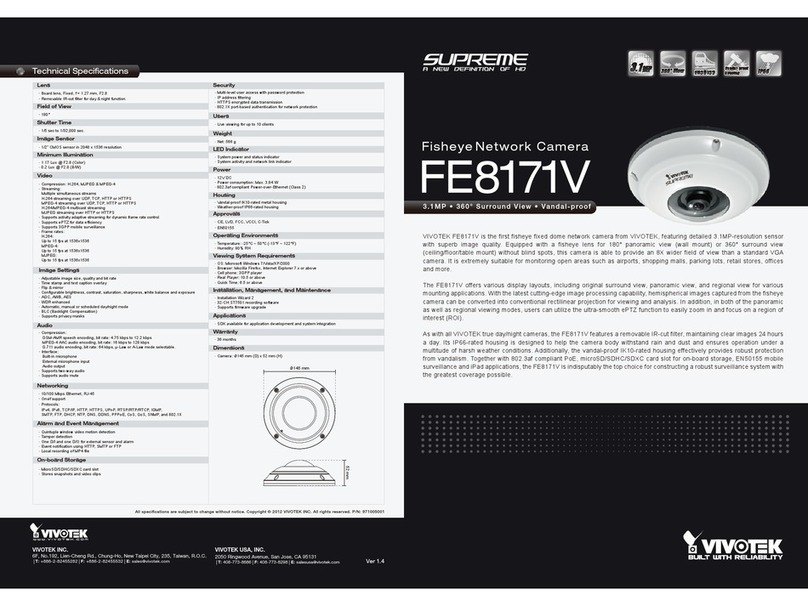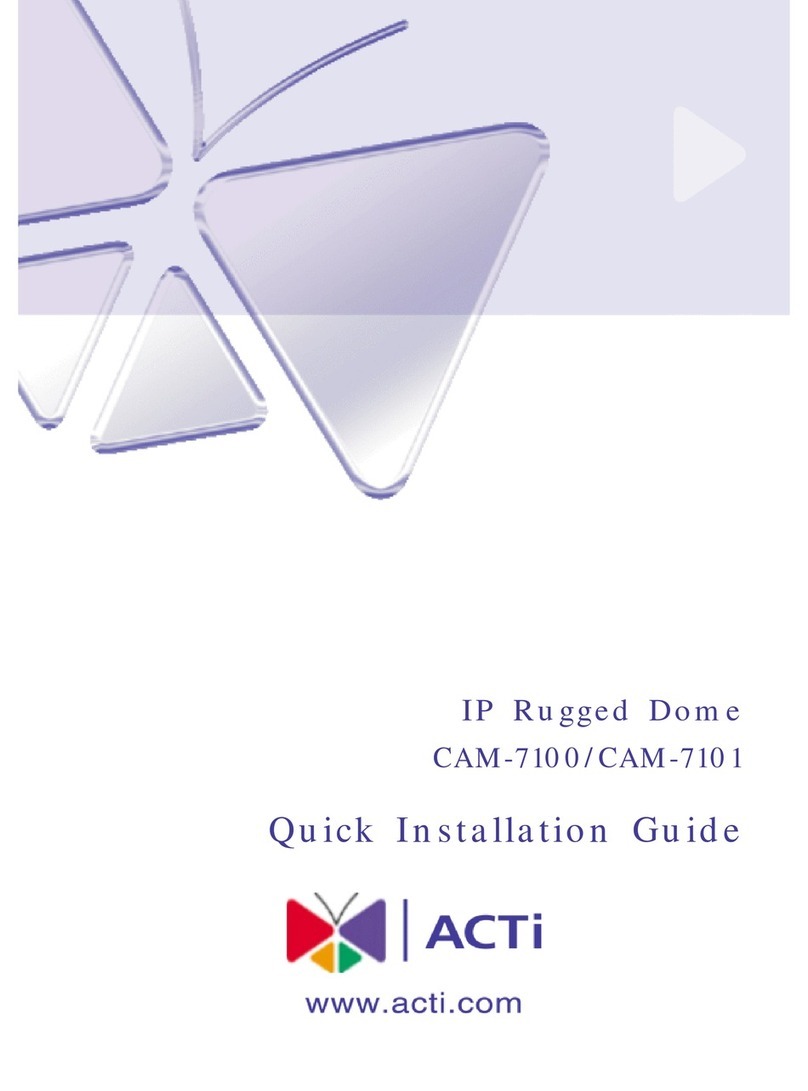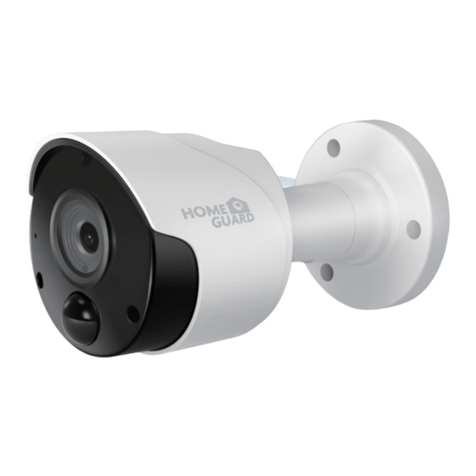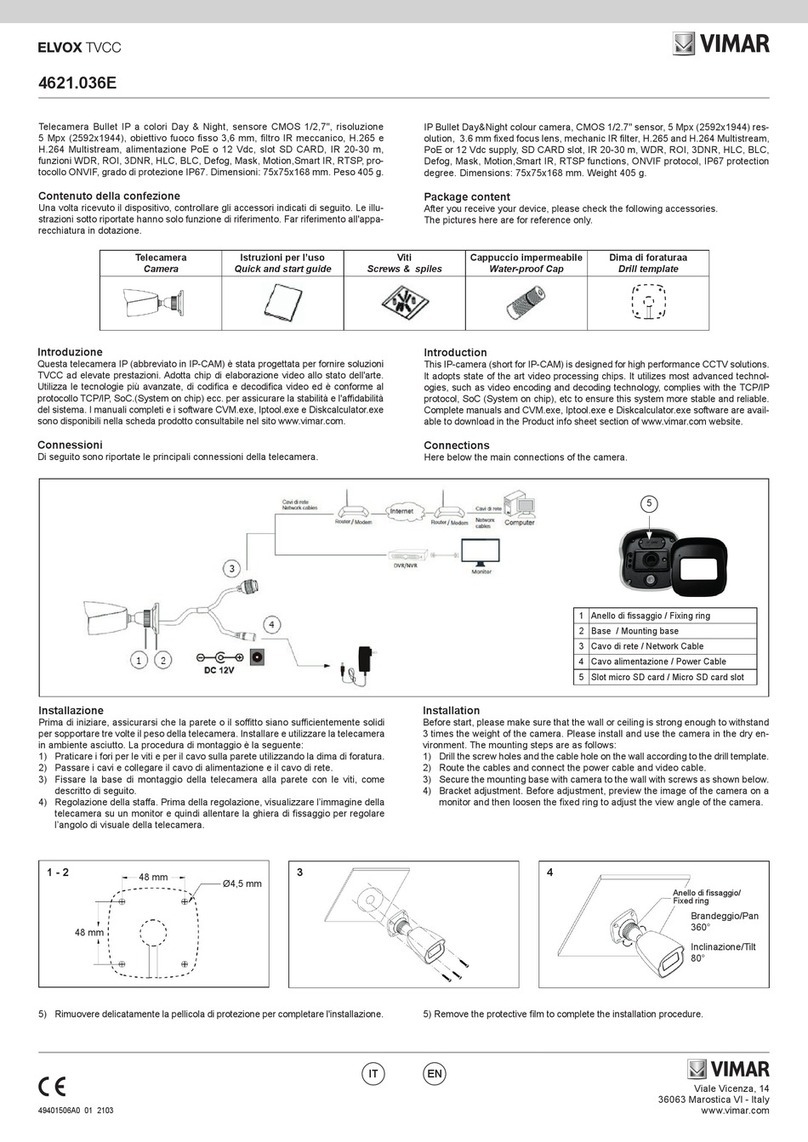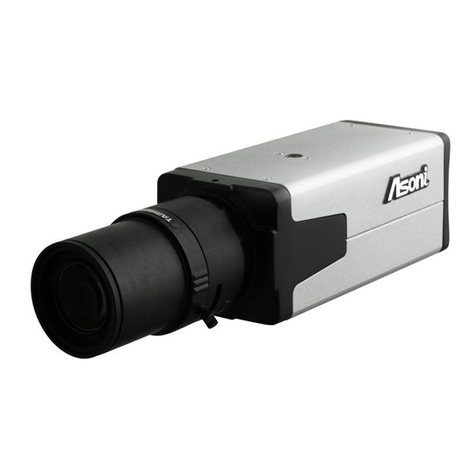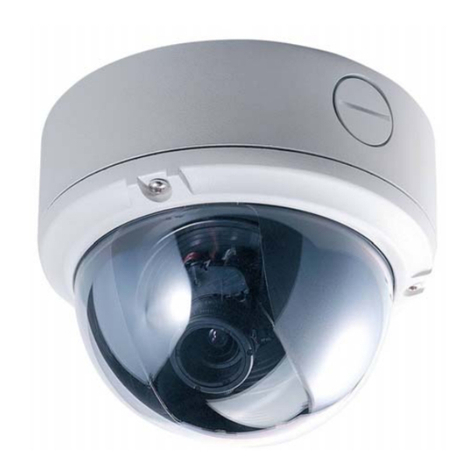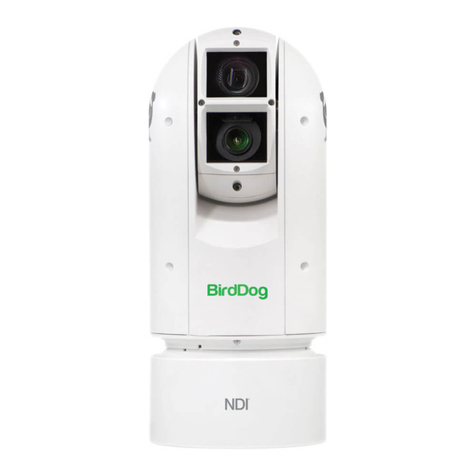Digiop BLK-IPS101 User manual

1www.digiop.com BLK-IPS101_CQ
5/27/11
Attach peripheral devices to the terminal blocks as needed. For detailed interface specications, refer to the
user manual.
Step 2. Connect the camera to the LAN
Attach the network LAN cable to the Ethernet connector on the camera backpanel.
Your camera can be powered locally with a 12 V DC adapter, or across the LAN (PoE). If using the power
adapter, attach the DC jack adapter cable to the DC 12V power adapter terminals on the back of the camera.
Connect the red wire of the adapter cable to the + terminal, and the black (or white) wire to the -terminal.
DO NOT apply power to the camera at this time.
DC Jack
Adapter
Cable
Step 3. Install IPAdmin Tool
The IPAdminTool is a utility for conguring the network settings of your Digiop Black cameras and installing
new rmware. It can be loaded on a Microsoft Windows XP, Vista or Windows 7 operating system. At a
computer on the same LAN (subnet) where your cameras will be installed, do the following:
1. Insert the CD mini disk provided with your camera into your computer’s CD ROM drive and open the
CD in a Windows Explorer window.
2. Find the IPAdminTool directory on the CD.
3. Copy the IPAdminTool directory with its contents to your computer hard drive.
Step 4. Configure the network settings of you camera
When your IP camera is attached to a network and initially powered on, it attempts acquire compatible
network settings from a DHCP server. If it cannot nd a DHCP server, it congures itself with the following
static (xed) settings, which may or may not be compatible with other devices on the network.
IP address: 192.168.0.100
Subnet mask: 255.255.255.0
Gateway: 192.168.0.1
Your camera must be congured with static network settings that are compatible with the LAN. If your
LAN has a DHCP server, use the following sub-step. Otherwise, use the sub-step procedure below for LANs
without DHCP.
Installing cameras on LANs with DHCP
1. Connect your camera to the LAN, then power on the camera.
2. Open the IPAdminTool directory on your computer, then double click the le IPAdminTool.exe to
start the application. When the IPAdmin Tool starts, it will discover all the IP devices it supports that
exist on the network. The discovery process may take a few minutes.
H.264 Network IP Camera
Quick Installation Guide
This document guides you through the basic steps to install and congure your Digiop® Black BLK-IPS101 IP
camera. For detailed instructions, refer to the User Manual.
Find the camera’s MAC address on the product label and enter it here: __________________
Step 1. Install the camera
Install the camera mounting bracket using the instructions provided with the bracket.
Attach the adapter for mounting the camera to side with the label or to the opposite side with the four
screws provided.
Mounting
adapter
Remove the protective cap covering the camera CCD.
Attach the lens assembly to the camera by screwing it clockwise onto the camera until it is fully seated. The
lens may require a mounting ring adapter to t onto the camera.
Tighten the lens set screw with the hex wrench provided.
If the lens assembly has an Auto Iris feature, attach the lens cable to the 4-pin connector on the back of the
camera.
Attach the camera to the mounting bracket.
CONNECTIONS
Connections to the camera for audio in and out (microphone and speaker), D/I sensor, alarm, and RS-485
control are made through the 9-pin terminal block. Plug the terminal block into the mating connector on
the camera.

2www.digiop.com © 2011 DIGIOP, Inc. All rights reserved.
Review the list of IP devices found by IPAdmin Tool. You can identify your camera by the MAC
address. If the camera was not found, click the Refresh button every minute until your camera
appears in the list.
3. After nding your camera, right click the entry, then select IP Address from the drop-down list. An
IP Setup window will open.
Static Option
4. In the IP Setup window, click the Static option bullet. If you have other compatible network
settings you want to apply to the device, enter them in the appropriate locations. Click Setup to
save settings.
5. In the Login window, enter the ID and PW
(password) for your camera, then click Login. The
default administrator values for the ID and PW are
root and pass.
6. In the IPAdmin Tool window, click Refresh.Verify that the entry representing the camera now
shows the (new) static IP address.
7. Continue with procedure Step 5. Setup camera Basic Conguration.
Installing cameras on LANs without DHCP
In networks without a DHCP server, cameras must be powered on and recongured one at a time to avoid
addressing conicts between other cameras, or possibly with another device on the network. Conguring
the network settings of your cameras includes these steps:
—Determine the network settings of your computer.
—Check the network for compatibility with the default static network settings of your camera.
—Find an IP address that is not in use and can be assigned to your camera.
—Attach your camera to the network, power it on, and conguring it with new network
settings.
Determine the network settings of your computer
1. At a PC attached to the LAN where your camera will be connected, determine the IP address, subnet
mask, and default gateway of your PC. To nd this information:
a. Hold down the Windows key and press rto
open the Run dialog box.
b. Type cmd in the entry eld, then click OK to
open the Command Prompt window.
c. At the command prompt, enter ipcong. The response will show the your PC’s network
settings.
d. Record the IP Address, Subnet Mask, and Default Gateway for your PC’s Ethernet adapter for
future reference.
NOTE
The Ethernet adapter data you see by using ipcong will probably be dierent from that shown
in the example above. If you are using Windows Vista or Windows 7, the IP address is identied
as the “IPv4 Address.”
Check LAN for default IP address compatibility
Before connecting your camera to the LAN, check the network to see if IP address 192.168.0.100 is already
in use. At a Microsoft Windows computer attached to the LAN where the camera will be connected, open a
Command Prompt window and enter:
ping 192.168.0.100
The “Request timed out” response indicates that the IP address is not in use and the camera can be
connected without causing conicts. If the response from the ping command received a “Reply..”, the IP
address is in use. Contact Technical Support for further assistance, if needed.
Find network settings (IP addresses) that are not in use
1. At your PC, nd an IP address on your network that is not in use:
a. Write down the EXACT IP address of your PC up to the third/last period. Using the example
shown above, this expression is: 192.168.1. After the third period, include any number
between 1 and 254 that is dierent from the one in your PC’s IP address, 168. As a rst try,
let’s choose 200, which will form the IP address 192.168.1.200.
b. Next, use the ping command in the Command Prompt window to see if this IP address is in
use on your network. Enter:
ping 192.168.1.200.
In the example shown above, the message “Reply from 192.168.1.200: ..” indicates that
your PC can reach a device with that IP address, and that address is in use (i.e., you cannot
use it for your camera).
c. Since the ping test showed that 192.168.1.200 is in use, try another number between 1 and
254. Let’s try to ping 192.168.1.201. At the command prompt, enter: ping 192.168.1.201
d. In this test, the message “Request timed out” indicates that your PC cannot reach the
device with that IP address, and that address is probably not in use. If this test showed that
this IP address is in use, try other IP addresses using the steps above until an unused address
is found.

3www.digiop.com © 2011 Digiop, Inc. All rights reserved.
Attach your camera to the network, power it on, and conguring it with new network settings
1. Connect the camera to the LAN and apply power to the camera. Wait until the initialization process
completes (2 to 4 minutes) before continuing.
2. Open the IPAdminTool directory on your computer, then double click the le IPAdminTool.exe to
start the application. When the IPAdmin Tool starts, it will discover all the IP devices it supports that
exist on the network. The discovery process may take a few minutes.
3. In the Product list, nd the entry with the same MAC address as the camera you installed. If the
camera is not shown, click Refresh once a minute to update the list.
4. Right click on the entry for your camera and select IP Address.
Static Option
5. In the IP Setup window:
a. Select the Static option if it is not selected.
b. Enter the new IP address for your camera into the IP Address eld.
c. Enter the subnet mask of your computer into the Subnet Mask eld.
d. Enter the gateway of your computer into the Gateway eld.
e. Click SETUP. A Login window will open.
6. In the Login window, enter the ID and PW
(password) for your camera and click Login. The
default administrator values for the ID and PW are
root and pass.
7. In the IPAdmin Tool window, click Refresh. Verify that the entry representing the camera now
shows the new IP address.
Step 5. Setup camera Basic Configuration
To view video images from the camera, at a computer attached to the LAN where the camera is installed,
open Microsoft®Internet Explorer and go to:
http://<IP address of the camera>
If the IP address is 192.168.1.201, enter: http://192.168.1.201
If prompted to install ActiveX controls such as AxAll.cab (publisher Cap Co), AxPTZ, or AxNVC, follow screen
prompts to install the software.
NOTE To load these ActiveX controls, you may need to adjust the security settings of your browser to
accept add-ins from unknown publishers.
After logging into your camera, if you cannot see live video from the camera and the message: “Can not
Create XMLDOMDocument Install MSXML4.0” appears, download and install the MS XML 4.0 library. This
library can be found at:
http://www.microsoft.com/downloads/details.aspx?familyid=3144B72B-B4F2-46DA-B4B6-
C5D7485F2B42&displaylang=en
After the camera VIEW screen appears, click SETUP and enter the default User name and Password, root
and pass.
In the SETUP window, go to Basic Conguration > Users.
In the User list, click root to highlight it, and then click Modify. Enter a new password and click OK. In the
Users screen, click Apply, and then click OK to restart the server.
Go to Basic Conguration > Date & Time.
On the Date & Time screen, set the Time Zone, Method, and Time Synchronization options. Click Apply.
Click VIEW to exit SETUP mode and return to the web viewing screen.

4www.digiop.com © 2011 Digiop, Inc. All rights reserved.
AIM AND FOCUS THE CAMERA
Set focus and zoom while observing video image from the camera. Video is provided through a web
browser, and by attaching a local video monitor to the LOOP OUT BNC connector on the back of the camera.
Use the documentation provided with your camera mounting bracket and lens to make these adjustments.
Use the documentation provided with your camera mounting bracket and lens to make these adjustments.
Table of contents
